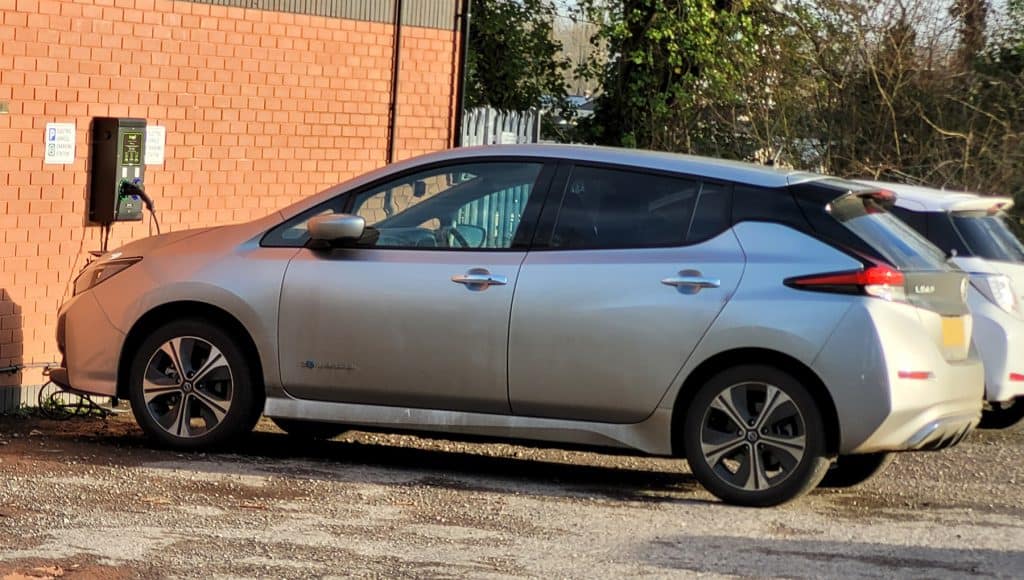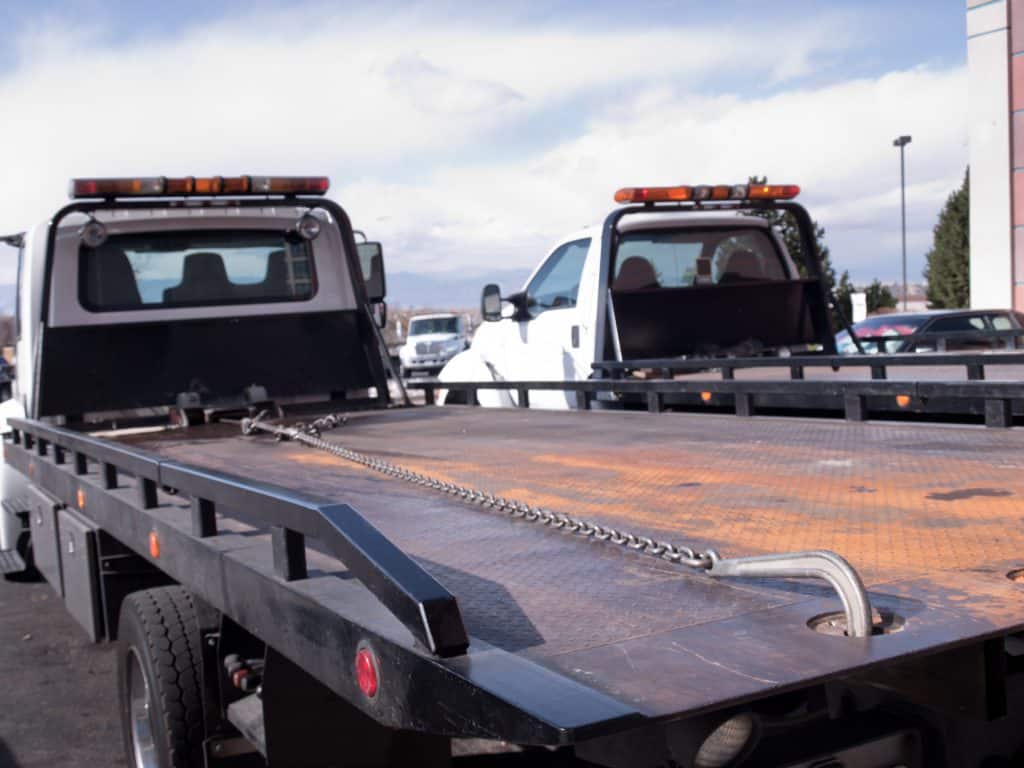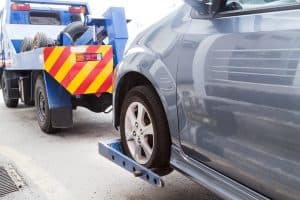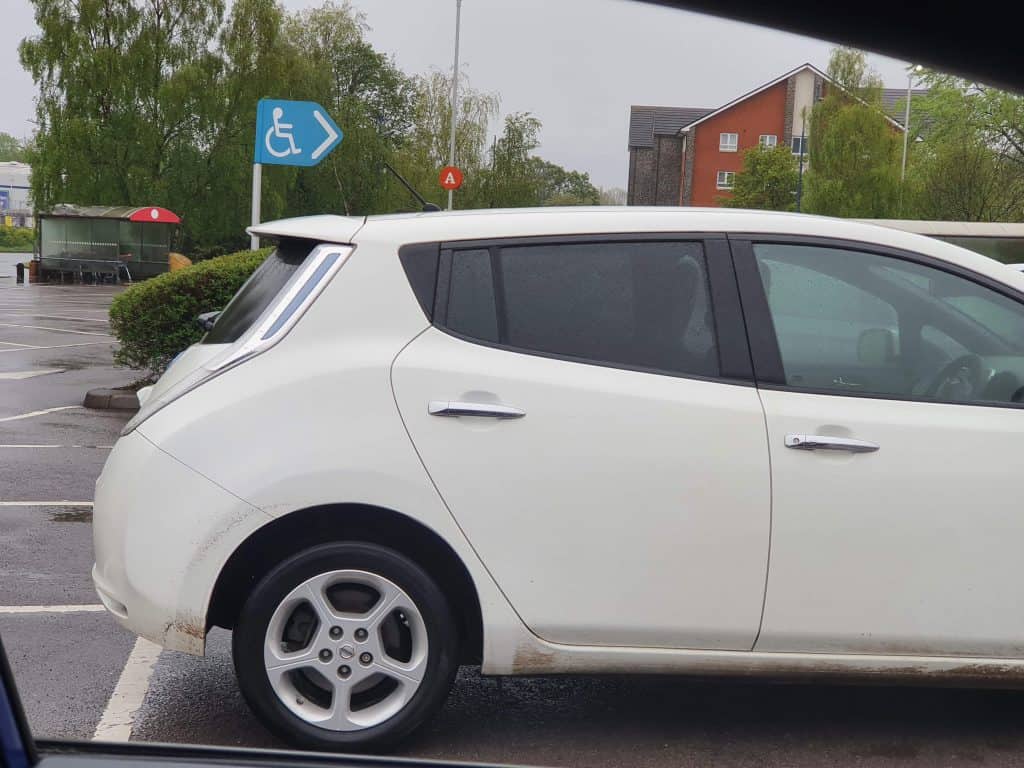There are many situations when we might need to contemplate having our car towed. Some of them are negative situations such as being broken down at the side of the road. Others are more positive situations such as towing the car to use as an everyday runabout car while you’re on an RV or motorhome vacation with the family.
There is, however, some concern when it comes to electric cars and towing. The easiest thing to do with any normal car is to put it in neutral, attach it to the rear of your RV or motorhome with a proper tow-bar or hitch, and then tow it on all four wheels rolling just behind. It’s secure, it’s affordable and it means you don’t have to purchase any additional equipment like a tow dolly or a flat-bed trailer.
Is this possible with the Nissan Leaf? This will be the subject of today’s blog.
Can the Nissan Leaf Be Flat Towed?
The short answer to this question is no, the Nissan Leaf cannot be flat towed. That’s mostly based on Nissan’s own recommendations, as shown on page 22-23 of the Nissan Leaf Roadside Assistance Guide. These guidelines state very clearly:
“Nissan strongly recommends that LEAF be towed with the driving (front) wheels off the ground or that the vehicle be placed on a flatbed truck.”
Nissan Leaf Roadside Assistance Guide, Pages 22-23
Nissan goes on to explain further about recommendations for towing the Nissan Leaf in ways other than flat towing, which we will explain further below. Why is it that the Nissan Leaf can’t be flat towed where combustion engine cars can?
The “Neutral” Problem

The main difference between electric cars and ordinary mechanical internal combustion engine cars is the issue of the neutral gear. Some electric cars don’t have a neutral gear, whereas all manual transmission cars with a combustion engine do. By putting the car in neutral, it separates the transmission from the engine and thus ensures that no damage can be done while it’s being dragged along on its wheels at some speed.
But hold on just one second…the Nissan Leaf has a neutral gear, doesn’t it? Actually yes it does, so why can’t we just put it in neutral and flat tow the car? The main problem with the Nissan Leaf neutral mode is that it requires the engine to be turned on. The Nissan guidelines on towing specifically state that the power button has to be off when towing the Nissan Leaf, so that’s not possible.
That also presents another problem when you want to tow the vehicle, because turning on the engine is going to drain battery life, and you won’t be able to have someone in the car ensuring that it is always in neutral and that the electric parking brake doesn’t come on. All of that is before we get to the illegality of having someone in the car while it’s being towed.
There are ways to get around the issue and tow the car, especially when it’s you the owner who wishes to tow it. Interestingly, problems surrounding towing of electric cars like the Nissan Leaf are far more confounding for local authorities than they are for owners.
For instance, to make a Nissan Leaf safe for towing on its rear wheels with the front wheels raised — the way just about any crew cab tow truck with a dolly or winch system would work — it really requires the owner to be present with the keys to unlock it, ensure it’s in park and the electric parking brake is disengaged.
With the owner absent, they can’t do that and that’s an issue. The only solution they have to dealing with a Nissan Leaf that is illegally parked, for example, is to call up a flatbed truck and winch the car onto that somehow. That’s more expensive than traditional towing.
How Does Flat Towing Normally Work?
Flat towing, also known as “four-down towing” and “dinghy towing” is where you use a tow bar to attach the towed car to a larger vehicle in front like an RV, pickup truck or capable SUV. The towed vehicle is secured to the front vehicle using the tow bar and then simply dragged along.
Flat towing is never a problem with manual cars because you just slip it into neutral and the transmission and drive shaft are then separated. Automatic transmissions (including modern electric car transmission) don’t always work in the same way and that’s why nowadays just about any car that you own you have to inspect the owner’s manual and warranty first to make sure that flat towing is permitted or advisable. The abundance of electronic transmissions that are now available have made flat towing increasingly challenging and doubtful.
Are There Other Ways to Tow a Nissan Leaf?

Yes, you can always tow your Nissan Leaf either by purchasing a flatbed trailer with the appropriate dimensions and load capacity, driving the Leaf up onto it and then towing the trailer as you would any other. That’s the easiest and safest method, but of course involves rather a lot of extra cost.
On average, a tow bar will cost you $30-60 or thereabouts. A new or used flatbed trailer could cost you anywhere from $4,000 to $12,000 depending on the size and brand. Even if you rented the trailer for a vacation period of 2-3 weeks, for example, then it would certainly cost you a lot more than the one-off fee for a tow bar which you would then own for its entire lifespan.

If you either can’t afford or don’t have the will to purchase and store, or rent a flatbed trailer, then there are other options. As we mentioned further above, the Nissan Leaf Roadside Assistance Guide cautions Leaf owners on a number of things to do with towing, and absolutely rejects flat towing, but it does reveal safe ways to tow the Nissan Leaf.
Below is a summary of the towing guidelines:
- The Nissan Leaf must never be towed with the drive wheels (front wheels) on the ground, including with all four wheels placed on the ground.
- If you tow the Nissan Leaf by raising the rear wheels, then the drive wheels must be supported with a small flatbed or other support mechanism to keep them from being in contact with the road’s surface.
- If towing on a flatbed trailer or truck, the Nissan Leaf can be facing the tow car, or away from the tow car, it makes no difference.
- If towing with the rear wheels on the ground, ensure that the power switch is OFF.
- If towing with the rear wheels on the ground, ensure that the electric parking brake is off.
You can find the rest of the cautions in the guide on page 22, as well as an illustration on page 23 demonstrating correct and incorrect towing positions. Towing on a dolly is also possible, provided that your Leaf’s engine is off, and the electric parking brake is disengaged. You can secure the front wheels to the dolly and then check the rear wheels are rolling properly.
You’ll have to be careful, and check at every rest stop that the front wheels are secure, the rear wheels are rolling smoothly and that the electric parking brake is disengaged at all times.
Can The Nissan Leaf Tow Other Things?

If you are interested in towing, then have you considered instead using your Nissan Leaf as the tow vehicle? The Nissan Leaf is capable of towing up to about 1,500lbs. We do, however, run into the problem of “official guidelines.”
Nissan, along with other electric vehicle producers like Toyota, GM and Mitsubishi all have an official line that does not condone towing in their electric vehicles. This doesn’t mean that they are physically incapable, but rather that they are not equipped to tow nor is it recommended by the manufacturer because they were not constructed with towing in mind.
(Note: companies like Tesla and VW either actively encourage towing and issue official towing capacities, so not all EVs ‘ban’ this).
Physics being what they are, however, a car the size of a Nissan Leaf can tow, and there are aftermarket tow hitch kits you can purchase which convert your Leaf into a towing machine. It should be noted that installation of these tow hitches will require cuts to be made in the plastic underbody of the car.
Towing and the Nissan Leaf Warranty
The first worry that comes to most people’s minds in this situation is “will fitting an aftermarket tow hitch and then using it to tow something invalidate my warranty?” It’s a fair question but also rather simple to answer. No, it won’t automatically invalidate the warranty. That doesn’t mean that your towing activities won’t void your warranty in other ways, however.
If you were towing something with your Nissan Leaf, and something went wrong with the kit and the entire procedure somehow did damage to your Nissan Leaf that you then hoped to have repaired under warranty, you’d better brace yourself for an awkward discussion at the Nissan dealership. Fitting towing gear won’t invalidate the warranty, but if it is determined that this modification (or any other modification) that you have made to the car is responsible for causing damage, then you won’t get warranty cover.
Conclusion: Towing is Okay – but Don’t Flat Tow
Whenever you decide to go against the official recommendations of Nissan, you are taking a serious risk. If it is the manufacturer’s position that you don’t flat tow the vehicle, then to keep your warranty intact and to ensure that you don’t risk any damage to the vehicles drivetrain or powertrain, it’s best not to flat tow. Follow the instructions as given in the Nissan guides, and don’t take unnecessary risks.